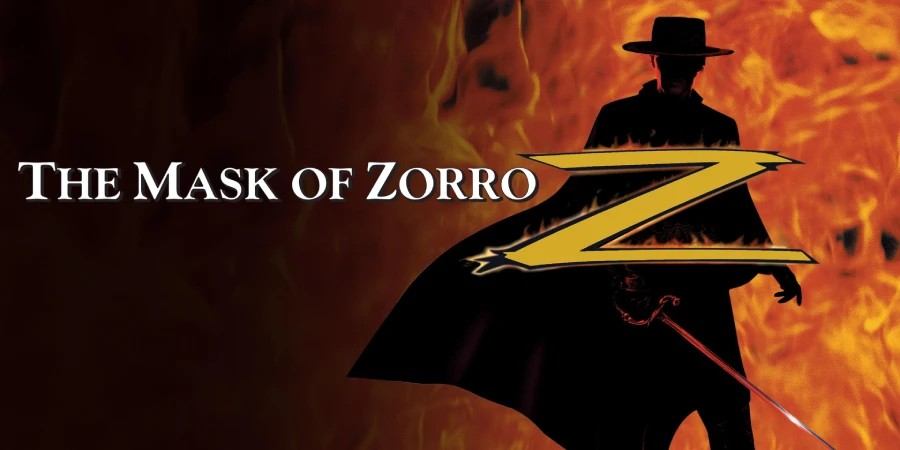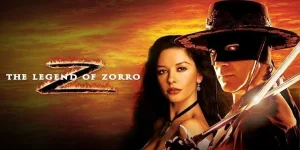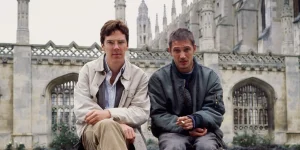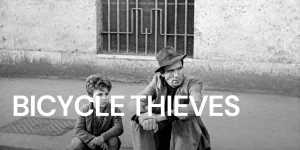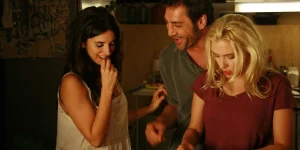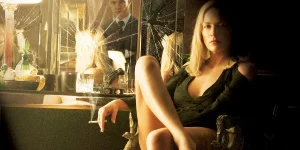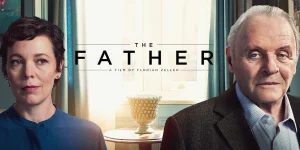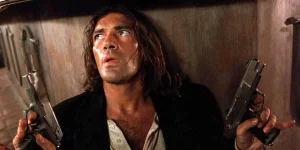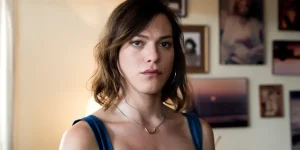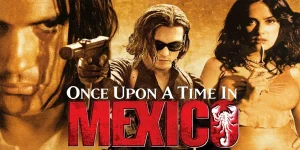The Mask of Zorro (1998), directed by Martin Campbell, is a swashbuckling action-adventure film that revitalized the legendary character of Zorro for a modern audience. With Antonio Banderas, Anthony Hopkins, and Catherine Zeta-Jones leading the cast, the film blends romance, revenge, and heroism in a sweeping tale of justice and legacy.
Table of Contents
ToggleDetailed Summary
The Fall of the First Zorro
The film begins in 1821 during the Mexican War of Independence. Don Diego de la Vega (Anthony Hopkins), the original Zorro, helps lead the people of California in a rebellion against Spanish rule. However, his nemesis Don Rafael Montero (Stuart Wilson) discovers his identity, invades his home, kills his wife Esperanza, and kidnaps his infant daughter Elena. Diego is imprisoned for 20 years, left to rot while Montero raises Elena as his own daughter.
The Rise of Alejandro Murrieta
Two decades later, Montero returns to California with Elena (Catherine Zeta-Jones), now a grown woman who knows nothing of her true heritage. Meanwhile, Alejandro Murrieta (Antonio Banderas), a thief and drunkard, seeks revenge on Captain Harrison Love (Matt Letscher), the officer who killed his brother. Diego escapes prison and takes Alejandro under his wing, seeing potential in him to become the new Zorro.
Training and Transformation
In a series of entertaining and rigorous training sequences, Diego molds Alejandro into a skilled swordsman, teaching him honor, patience, and sophistication. Alejandro eventually infiltrates Montero’s inner circle by posing as a wealthy nobleman. This brings him into contact with Elena, with whom he develops a romantic tension that grows as the story progresses.
Uncovering Montero’s Plan
Montero reveals his sinister plan: he intends to use a hidden gold mine—worked by enslaved peasants—to buy California from Mexico and establish himself as its ruler. Among the enslaved are people Alejandro and Diego once knew, deepening their resolve to stop Montero.
Love, Betrayal, and Secrets
Elena and Alejandro’s chemistry intensifies, culminating in the iconic candlelit fencing scene that turns into a flirtatious dance of blades and attraction. Meanwhile, Elena discovers through a confrontation with Diego that she is actually his daughter, stolen from him as a child.
Movie Ending
The climax unfolds at the gold mine. Montero and Captain Love attempt to trap Diego, Alejandro, and the enslaved workers inside. A fierce battle erupts: Alejandro duels Captain Love in a brutal swordfight, finally avenging his brother’s death by killing Love. Meanwhile, Diego faces Montero, settling decades of rivalry. Diego fatally wounds Montero but is mortally wounded himself in the process.
Alejandro and Elena manage to save the enslaved workers before the mine explodes, bringing an end to Montero’s reign of exploitation. In a deeply emotional farewell, Diego acknowledges Alejandro as the true successor to the mantle of Zorro and reconciles with Elena as his daughter before dying.
The film closes with Alejandro donning the mask of Zorro, embracing his new identity, and starting a family with Elena. In the final scene, he narrates his acceptance of the Zorro legacy, symbolizing the continuation of the legend.
Are There Post-Credits Scenes?
No. The Mask of Zorro does not include any post-credits scenes. The film ends conclusively with Alejandro’s acceptance of the mantle and Diego’s death, leaving no teasers for future installments.
Type of Movie
The film is a swashbuckling action-adventure with elements of romance and historical drama. It carries the DNA of classic Hollywood adventures while updating the style with modern cinematography and choreography.
Cast
- Antonio Banderas as Alejandro Murrieta / Zorro
- Anthony Hopkins as Don Diego de la Vega / Zorro
- Catherine Zeta-Jones as Elena Montero
- Stuart Wilson as Don Rafael Montero
- Matt Letscher as Captain Harrison Love
Film Music and Composer
The score was composed by James Horner, whose sweeping orchestral work gives the movie its epic and romantic feel. The soundtrack blends Spanish guitar, traditional orchestration, and heroic themes, perfectly matching the adventurous tone.
Filming Locations
- Mexico: Most of the film was shot in Mexican states such as Durango and Mexico City. The landscapes provided authentic backdrops for California’s 19th-century look.
- Studio Sets: Elaborate sets were built for the haciendas, villages, and especially the gold mine sequences, which were crucial for the grand finale.
Awards and Nominations
- Nominated for Golden Globe Awards: Best Actress in a Motion Picture – Musical or Comedy (Catherine Zeta-Jones).
- Won ALMA Awards: Outstanding Actor (Antonio Banderas) and Outstanding Actress (Catherine Zeta-Jones).
- Nominated for various technical awards for its production design, score, and stunt work.
Behind the Scenes Insights
- Antonio Banderas performed many of his own stunts and underwent intense sword-fighting training.
- Catherine Zeta-Jones’s performance launched her to international stardom.
- Anthony Hopkins, though initially thought too old for the role, added gravitas and emotional weight as the mentor figure.
- Director Martin Campbell was chosen after his success with GoldenEye (1995).
Inspirations and References
The movie is based on the legendary fictional character Zorro, created by Johnston McCulley in 1919. The story specifically draws inspiration from pulp novels, serialized adventures, and classic Hollywood swashbucklers like Douglas Fairbanks’s The Mark of Zorro (1920).
Alternate Endings and Deleted Scenes
While no official alternate ending exists, some deleted training sequences between Diego and Alejandro were trimmed for pacing. A few extended romance scenes between Alejandro and Elena were also cut.
Book Adaptations and Differences
Zorro was originally a pulp novel character rather than a single book. The film does not directly adapt one novel but instead reimagines the mythos, particularly the idea of passing the mantle of Zorro from one generation to the next.
Memorable Scenes and Quotes
Key Scenes
- Zorro’s dramatic horse escape in the opening sequence.
- Alejandro’s first appearance as Zorro, stealing a horse in full disguise.
- The candlelit fencing duel between Alejandro and Elena.
- The mine explosion climax with Alejandro’s showdown against Captain Love.
- Diego’s death and Alejandro embracing the legacy.
Iconic Quotes
- Diego de la Vega: “There is a saying, a very old saying: when the pupil is ready, the master will appear.”
- Alejandro (to Elena): “I would rather die a thousand deaths than lose you again.”
- Alejandro: “Zorro was a servant of the people, not their master. He cared about justice, not power.”
Easter Eggs and Hidden Details
- The film’s opening sequence pays homage to Douglas Fairbanks’s original Mark of Zorro.
- The “mask transfer” theme is symbolic, representing not just Zorro as a man, but Zorro as an idea.
- Alejandro’s clumsiness in early training mirrors Banderas’s real learning curve with fencing.
Trivia
- Antonio Banderas became the first Spanish actor to play Zorro on screen.
- Catherine Zeta-Jones had to learn horseback riding and fencing from scratch for the film.
- The mine set was one of the largest practical sets built in the 1990s.
Why Watch?
Because it’s the perfect blend of old-school swashbuckling adventure and modern cinematic energy. The performances are charismatic, the sword fights are thrilling, the romance is fiery, and the story captures the timeless allure of justice versus tyranny.
Director’s Other Movies
- GoldenEye (1995)
- Casino Royale (2006)
- Green Lantern (2011)
- The Foreigner (2017)
Recommended Films for Fans
- The Legend of Zorro (2005)
- The Three Musketeers (1993)
- Robin Hood: Prince of Thieves (1991)
- Pirates of the Caribbean: The Curse of the Black Pearl (2003)
- The Adventures of Robin Hood (1938)

